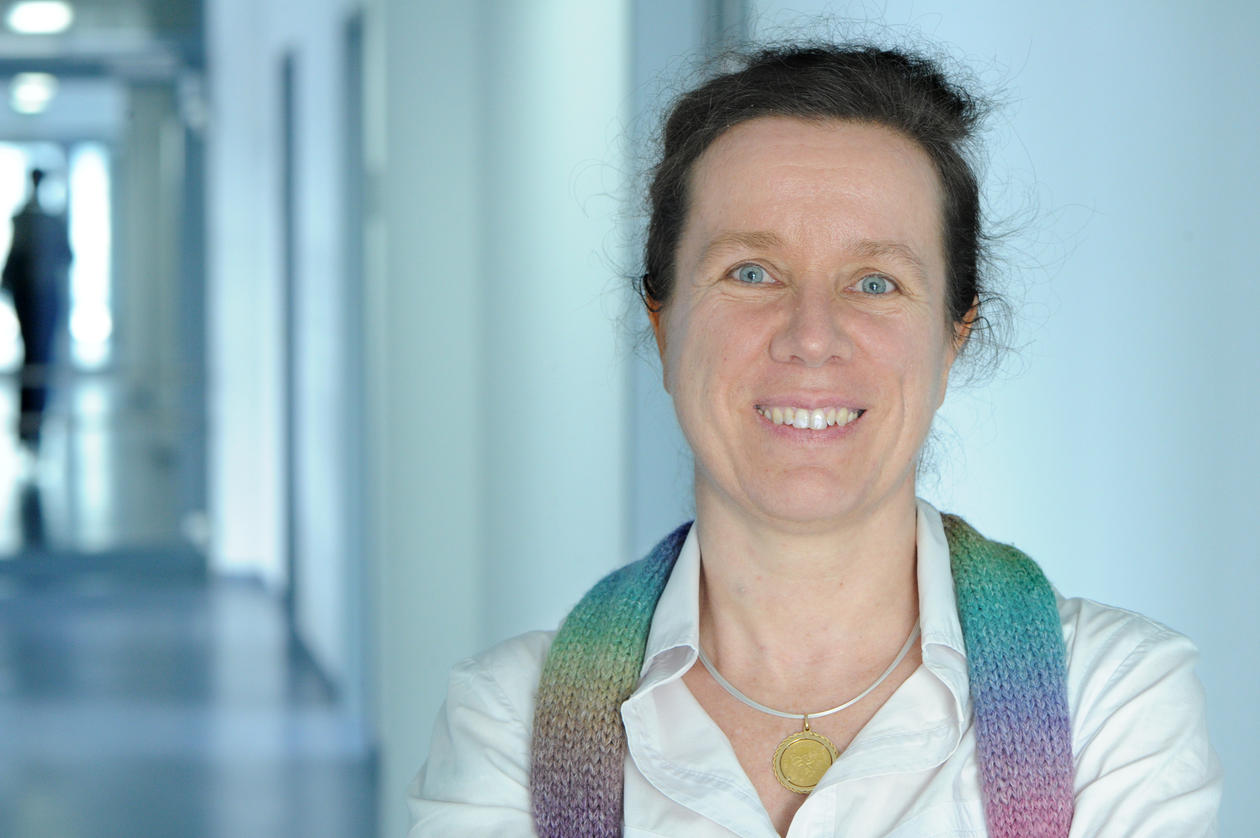The queen of grand challenges
- Modern numerics has many facets, says Barbara Wohlmuth. She is the second to be appointed as Magne S. Espedal Professor.

Hovedinnhold
- If you try to tell your neighbor what you are doing, what do you say?
- I work on the mathematics and engineering that has to do with computer simulations of important natural events such as the behavior of geological materials and the flow of water and oil through subsurface regions of the earth. We develop computer models of such events and use them to predict the future, to predict the flows and production of wells and to design systems to maximize outputs. I particularly focus on the accuracy of these mathematical schemes, the control of errors and on how to develop numerical algorithms to perform efficiently on today's computers, says Wohlmuth.
She completed her doctorate in 1995 at TUM and her lecturer qualification in 2000 at the University of Augsburg. After that? The Courant Institute of Mathematical Sciences at New York University, Université Pierre et Marie Curie, Paris. Visiting professor in France and Hong Kong. She is member of the Executive Board of the Association of Applied Mathematics and Mechanics (GAMM) and Chair of the Advisory Board of the Weierstrass Institute for Applied Analysis and Stochastics.
Wohlmuth is also a member of the Editorial Board of Computational Mechanics, Zeitschrift für Angewandte Mathematik und Mechanik, SIAM Journal on Scientific Computing and Numerische Mathematik.
- You have been an academic globetrotter. Why Bergen?
- I have been first to Bergen in late fall 2000 for an extended research stay during my sabbatical. It was raining and raining every single day but the last one. The sky was bright blue and fresh snow was on top of the Fløien and I almost missed my plane back to Stuttgart since it was so beautiful outside. I immediately fell in love with the city, the people and was
impressed by the inspiring scientific atmosphere and the open and challenging discussions we had. Since then I was in Bergen for several high quality PhD defenses in the field of porous media applications and numerical algorithms. The University of Bergen will host in 2017 the European Conference on Numerical Mathematics and Advanced Applications
which is a great opportunity to bring in international scientists from all over the world to Bergen.
- What is the core elements of your research?
- By training, I am a numerical analyst working in the field of simulation technologies for partial differential equations. However, I was always attracted to the field of computational sciences and engineering (CSE). So nowadays, my work not only involves the analysis of new numerical schemes such as discretizations, solvers, error estimations but also the whole CSE loop ranging from the mathematical modelling, the numerical algorithm, the performance analysis on supercomputers to simulation and model calibration.
Prof. Barbara Wohlmuth is the second to be appointed as Magne S. Espedal Professor by the Faculty of Mathematics and Natural Sciences. As a teacher and supervisor Espedal (1942-2010) was an excellent role model for students in mathematics.
- Magne Espedal was a co-advisor of my first PhD student within the international and interdisciplinary graduate school NUPUS. NUPUS stands for non-linearities and upscaling in porous media. Founded in 2007, the University of Bergen, supported by the Research Council of Norway, oined this scientific network a couple of years later. When I learned
about the appointment, I was very much honored and recalled the time Magne spent on introducing us to operator splitting methods. We had many discussions with him on possible pitfalls and how to harness best the potential of these techniques, says Barbara.
- And the Espedal-lecture?
- I hope to show that modern numerics has many facets and that it is a lot of fun to work in a diverse and scientifically challenging field.
- We all try to understand the way of the world; how cant mathematics in high-performance computing help?
- Mathematics-based advanced computing has become an indispensable tool for innovation in technology and society and for discovery in essentially all areas of science and engineering. Let us consider one example from Geophysics. Much of what one refers to as geological activity of the Earth is due to the fact that heat is transported from the interior of our planet to the surface in a planetwide solid-state convection of the Earth’s mantle. Linking mantle processes to their surface manifestations is seen widely today as one of the most fundamental problems in the Earth sciences, while being at the same time a matter of direct practical relevance through their impact on the evolution of sedimentary basins and their paramount economical importance.
- The sheer magnitude of the computational challenge of earth mantle simulations on modern super-computer architectures can be grasped easily from the dramatic growth of disciplinary complexity. Dominating roadblocks in Geophysics are model complexity and uncertainty in parameters and data, e.g., rheology and seismically imaged mantle heterogeneity, as well as the enormous space and time scales one must resolve. In Algorithmics, the traditional view of optimality is more and more obsolete and must be replaced by new HPC performance oriented metrics. In Exascale Computing, the disruptive transition from modest concurrency to billions of threads leaves the software development trailing behind. Such grand challenge problems can be on tackled by joining efforts between disciplines and a holistic approach including a performance aware numerics.
